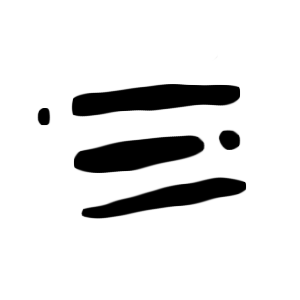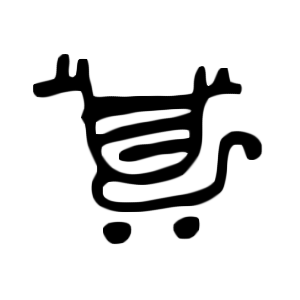Rune Translator
← Back* Paste in some rune text or use the keyboard below
Your text will appear here

Custom Stave
Create your own stave, with several unique spear-heads for names which you can compare with friends and family to see who you align with!

Old Norse Translator
Translate text into Old Norse with a language-learning model and see how it looks like in different futhark runes

Custom Bindrune
Create your own bindrune from your name or initials and read what the different runes in your bindrune represent
More about Runes
Runes are phonetic
This means you spell it as it sounds, instead of writing letter for letter. Spelling does not follow rules in the same manner as they do today. Words will look different depending on the carvers own dialect. Because we today know many of the sounds of the runes we can therefore read words that are the same, but "spelled" differently.
In this translator I've made it translated letter for letter as it is the easiest way for a modern human to translate it, but it does work best using Old Norse.
In this translator I've made it translated letter for letter as it is the easiest way for a modern human to translate it, but it does work best using Old Norse.
There are many dialects
Another thing to keep in mind is, is that there was not 'one' correct Old Norse language. It spanned over the whole of Scandinavia and even reaching far from the north at times
This means there can be differences in how certain things are spelled on a runestone or carving that come from very different places. Nowadays Icelandic is the closest to Old Norse
This means there can be differences in how certain things are spelled on a runestone or carving that come from very different places. Nowadays Icelandic is the closest to Old Norse
Futhark not alphabet
Runes werent written in the alphabetical order, instead they had their own order known as a futhark
We have numerous finds that have the futhark sequence written on them, thanks to this we know in what order they were usually represented. The order is unique and only occurs with runes, due to that it is speculated this sequence held some meaning.
We have numerous finds that have the futhark sequence written on them, thanks to this we know in what order they were usually represented. The order is unique and only occurs with runes, due to that it is speculated this sequence held some meaning.
Runes are letters & magic
Usually people fall into one of two schools. Either runes were the most-bland-boring just-letters or that runes were magical from every single angle you might ever turn history.
The truth is they were used for both, spells were written out in runes as well as things were decorated with repetitive runes that spell nothing, but instead are to invoke some sort of power we have still to figure out. Runes were also used for the most every day tasks such as Iron Age and Medieval chatting on wooden surfaces.
The truth is they were used for both, spells were written out in runes as well as things were decorated with repetitive runes that spell nothing, but instead are to invoke some sort of power we have still to figure out. Runes were also used for the most every day tasks such as Iron Age and Medieval chatting on wooden surfaces.
The gods gave us runes
While we ponder where the runes and their mystical whereabouts come from, we actually have stories of where they came from
One of these is found on the Sparlösa runestone, where it says the gods gave them to humans. Another story tells of Odin hanging from a tree for 9 days and 9 nights to learn the runes, after which he taught them to humans
One of these is found on the Sparlösa runestone, where it says the gods gave them to humans. Another story tells of Odin hanging from a tree for 9 days and 9 nights to learn the runes, after which he taught them to humans
Bindrunes were a thing
Nowadays bindrunes have become very esoteric, but they are not an entirely new invention
Back in the day bindrunes were used as signatures, to save space or to decorate pieces. There are numerous finds of bindrunes like the Gallehus Horns, a runestone in Bolum, the Rök stone etc
Back in the day bindrunes were used as signatures, to save space or to decorate pieces. There are numerous finds of bindrunes like the Gallehus Horns, a runestone in Bolum, the Rök stone etc
Hungry for more?
Well you are in luck! My wife Elin ( @Mooselady ), who is a BA in Cultural Heritage and BA in Archaeology, currently studying for her Masters from the University of Göteborg, Sweden has compiled a long blog post on the basics of runes.
The article features numerous pictures and examples, all the theories how runes reached the Germanic people and Scandinavia, the names of the runes and rune poems. As well as the magical uses that we have remaining from actual historical sources.
So if you dont feel like hanging yourself from Yggdrasil for 9 days and 9 nights, then check out this article as a bit of an easier start on the runes! And feel free to leave a comment there if you have any questions or ideas. See you there !
Learn The Runes
Lets go over where the runes come from, their uses in writing and magic, the history of runes and the science behind them
Names of the Runes and rune poems
An excerpt from the runes article about the names of the runes and the poems they come from.
Rune
Elder
Younger
Anglian
Poem



